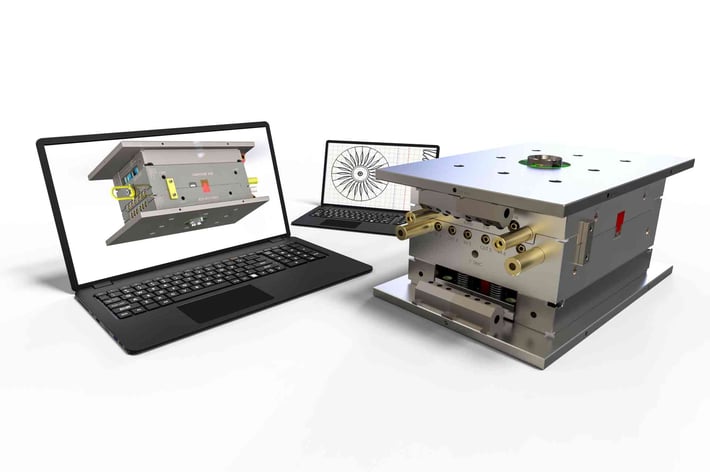
Two of the most common plastic injection molding services used throughout the industry today are insert molding and overmolding. These specialized production processes are so closely related that sometimes customers use the names interchangeably. However, there are some key technical differences which set these two crucial injection molding capabilities apart.
How Does Plastic Insert Molding Work?
Plastic insert molding is a specialized variant of injection molding that combines metal parts, ceramics, or other (generally rigid) materials through a precise, highly customizable molding process.
This technique allows injection molding companies like AIM to manufacture composite parts and assemblies that feature increased structural strength and rigidity in key locations, while also providing the design flexibility and cost-effectiveness of plastic manufacturing.
How Is Plastic Overmolding Different from Insert Molding?
Essentially, plastic overmolding is a specific type of insert molding in which molded components are molded over top of other molded parts – hence the name. A unique form of multi-shot injection molding, the overmolding process builds the substrate with the first shot of molten plastic, then creates a precisely layered overmold with a second shot.
Some Common Examples of Custom Insert Molded / Overmolded Products:
- Threaded Inserts and Fasteners: Many plastic products require threaded connections for the assembly of multiple components, or to allow for mounted accessories. Unfortunately, most conventional molded plastic materials are not ideal for small threads or fasteners, particularly if the product will be disassembled and reassembled often. Insert molding allows us to integrate high-strength metal threads and fasteners which resist wear and deformation into virtually any plastic part.
- Brackets, Mounts, and Handles: Speaking of high-strength requirements, plastic products often require increased strength and rigidity in other key locations – such as mounting brackets, component mounts, or carrying handles. With insert molding and overmolding, we can meet customers’ requirements for increased durability while keeping the overall cost-per-product at a minimum. By placing a metal spine-like structure into the tool, one can obtain a great balance of complexity, lightweight, and cost. In other applications, a plastic structure may perform too.
- Electronics Components, Ports, and Connectors: Electronics products generally feature custom plastic casings and enclosures which house all vital components and create a presentable, ergonomic end product. Often, custom inserts are molded into the enclosure for the installation of cable ports, connectors, and other auxiliary components.
- Ergonomic Grips and Handles: Almost any molded plastic product’s ergonomics can be enhanced through overmolding. Rather than being confined to a single plastic material – constrained by cost or design requirements – we can overmold special materials and premium elastomers in key components such as grips and handles. There are functional benefits such as shock absorption and grip, but there is also flair. An overmolded product is often more appealing.
- Custom Metal Components: Insert molding services are used in a multitude of additional applications as a metal replacement solution. With custom insert molding, we can retain metal materials in all key locations where increased strength and rigidity are required. Simultaneously, we can reduce costs, material usage, and product weight by replacing metal with injection molded plastics wherever possible.
Specializing in Custom Insert Molding and Overmolding Services
AIM Processing is proud to be one of America’s leading injection molding companies offering complete insert molding and overmolding services. An ISO 9001:2015 registered domestic manufacturer based in the Denver, Colorado region, our company is committed to uncompromising quality, consistency, and responsive customer service.

 SINCE 1993 MADE IN USA
SINCE 1993 MADE IN USA 

